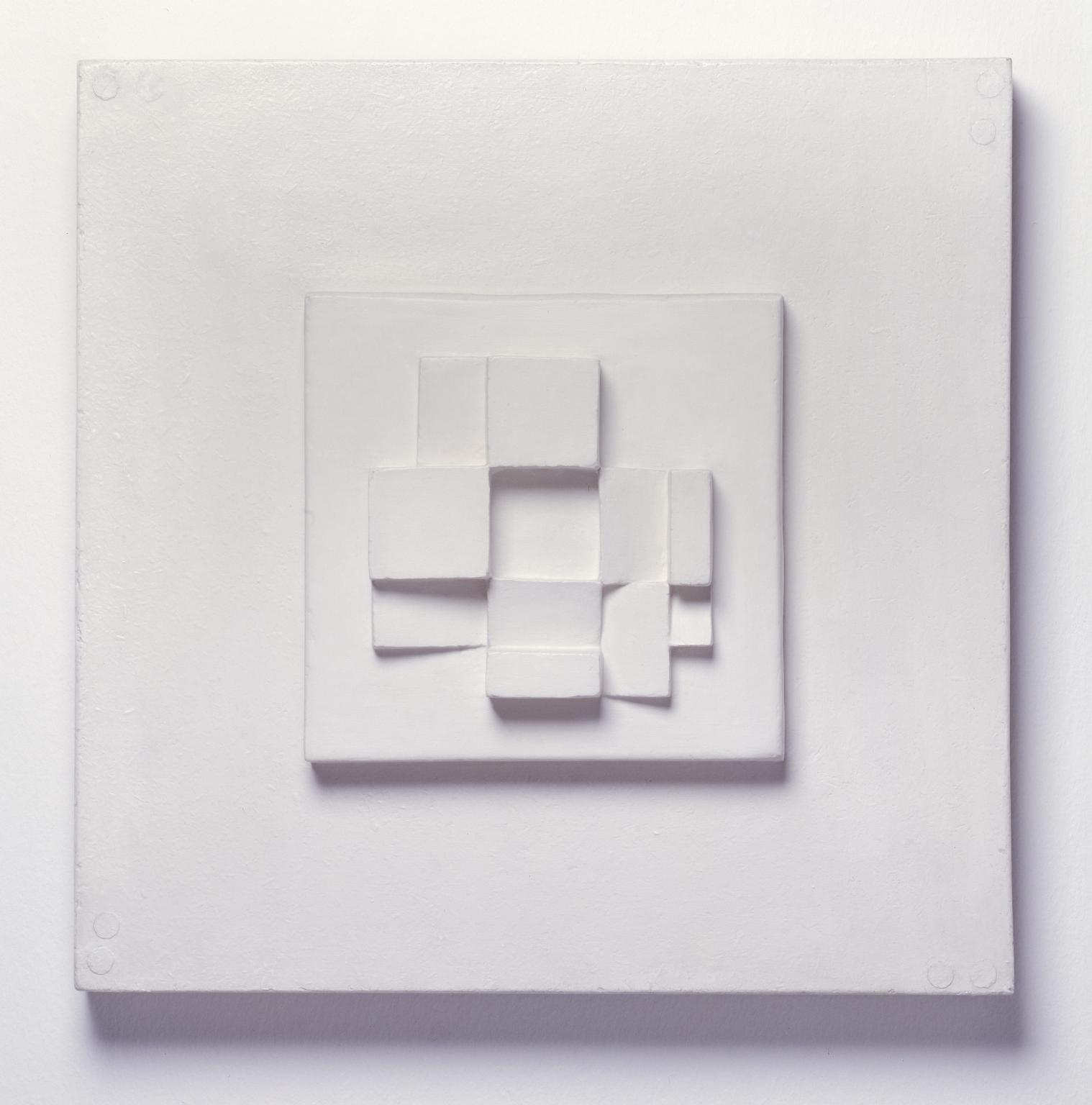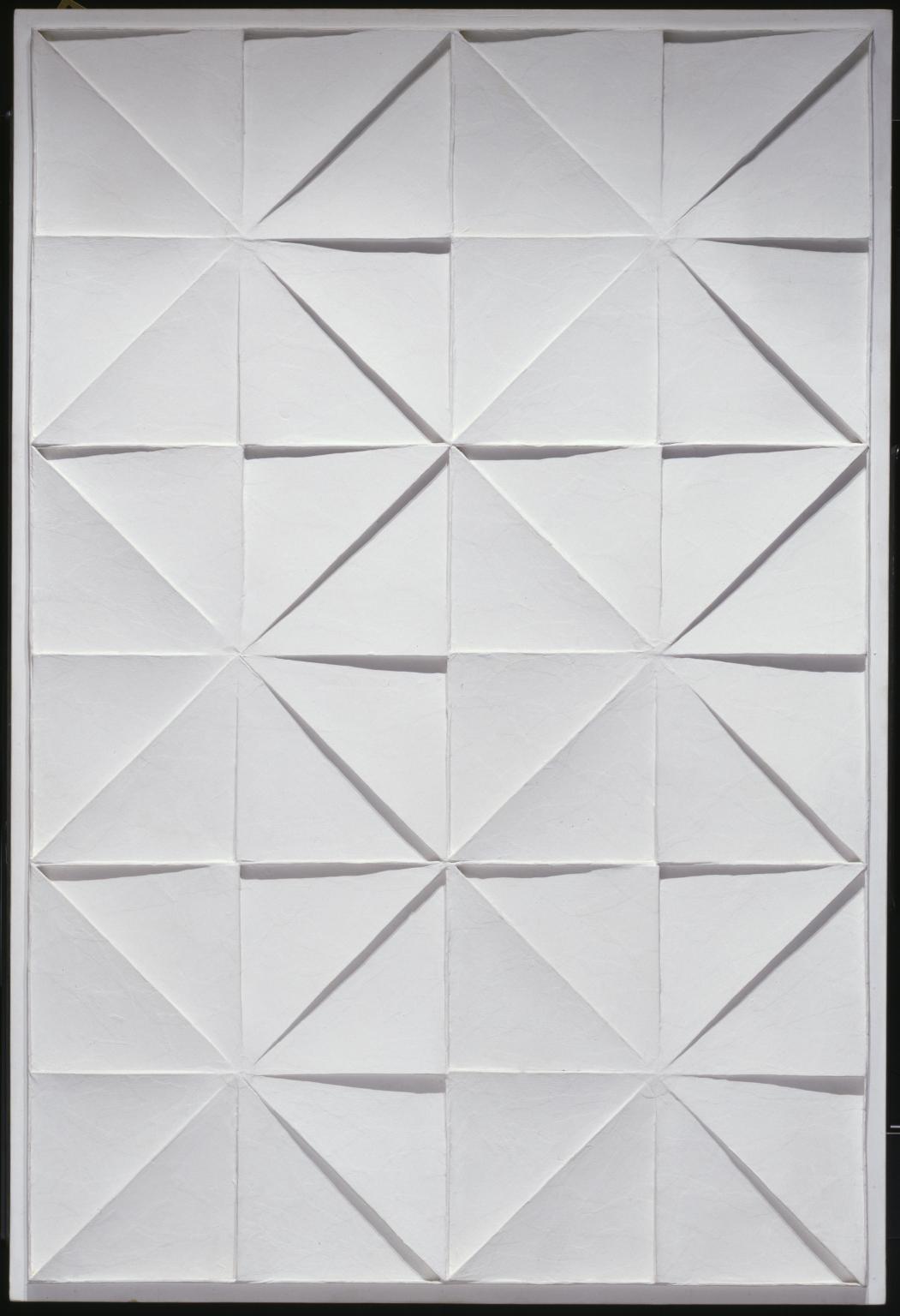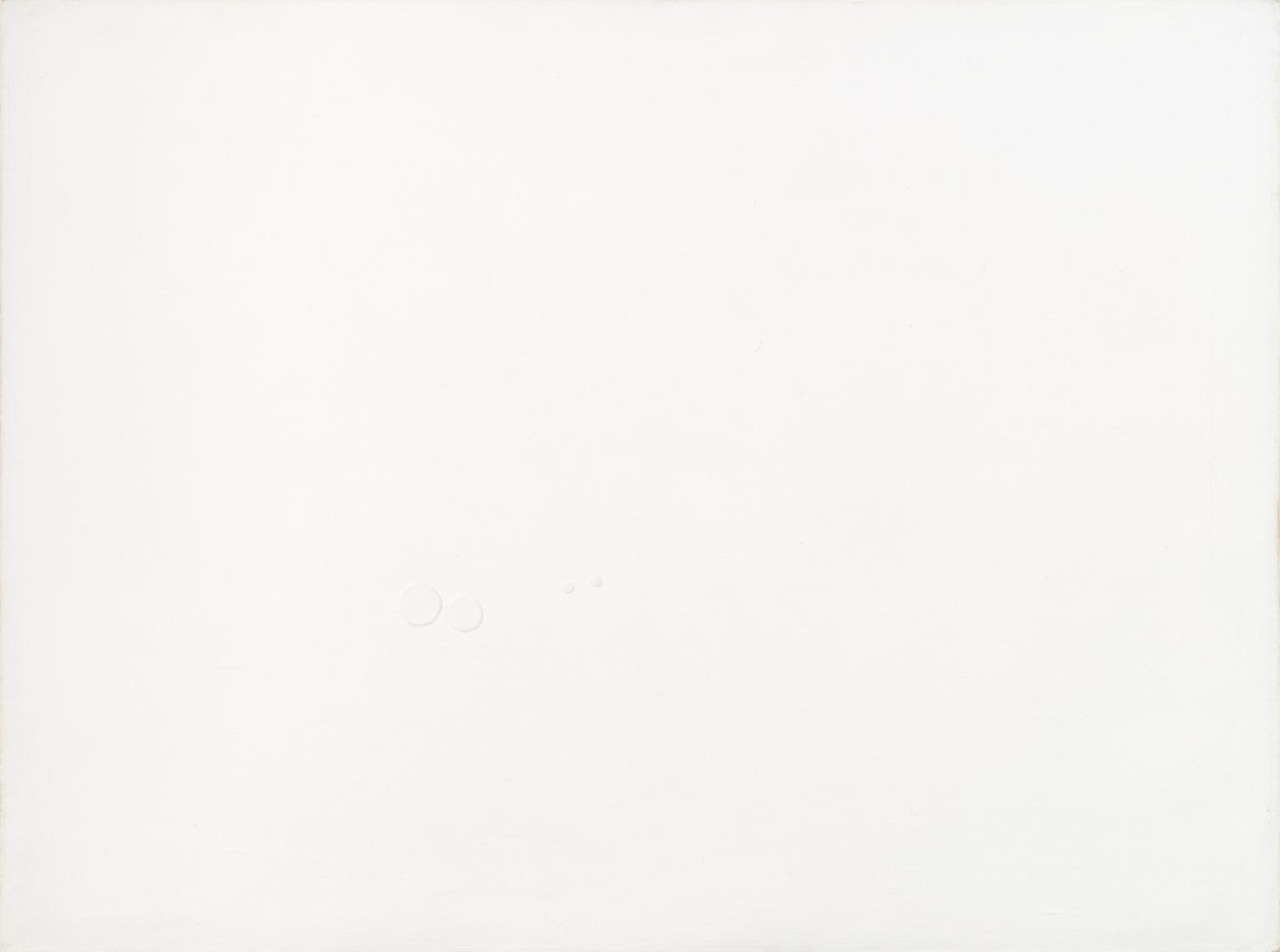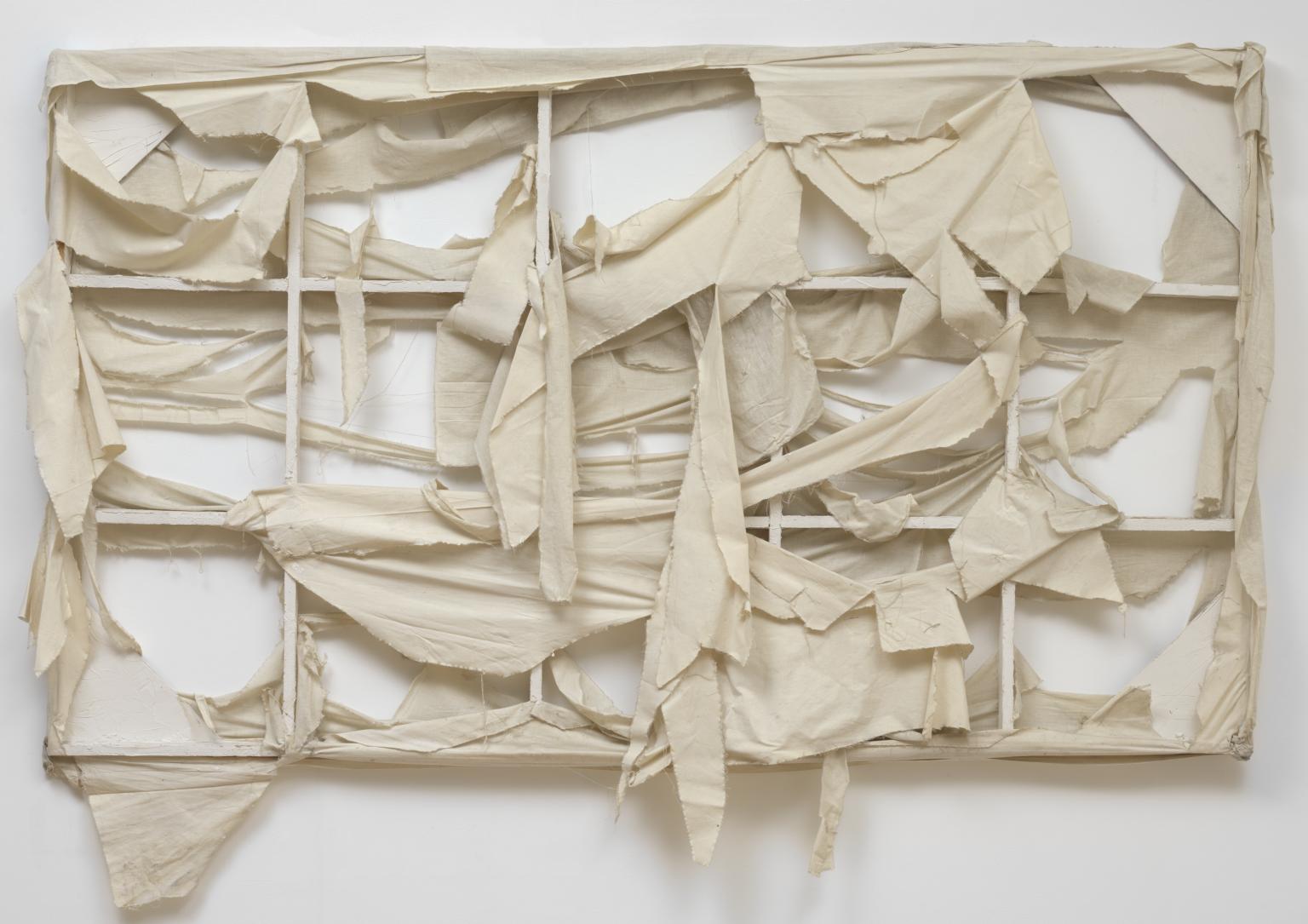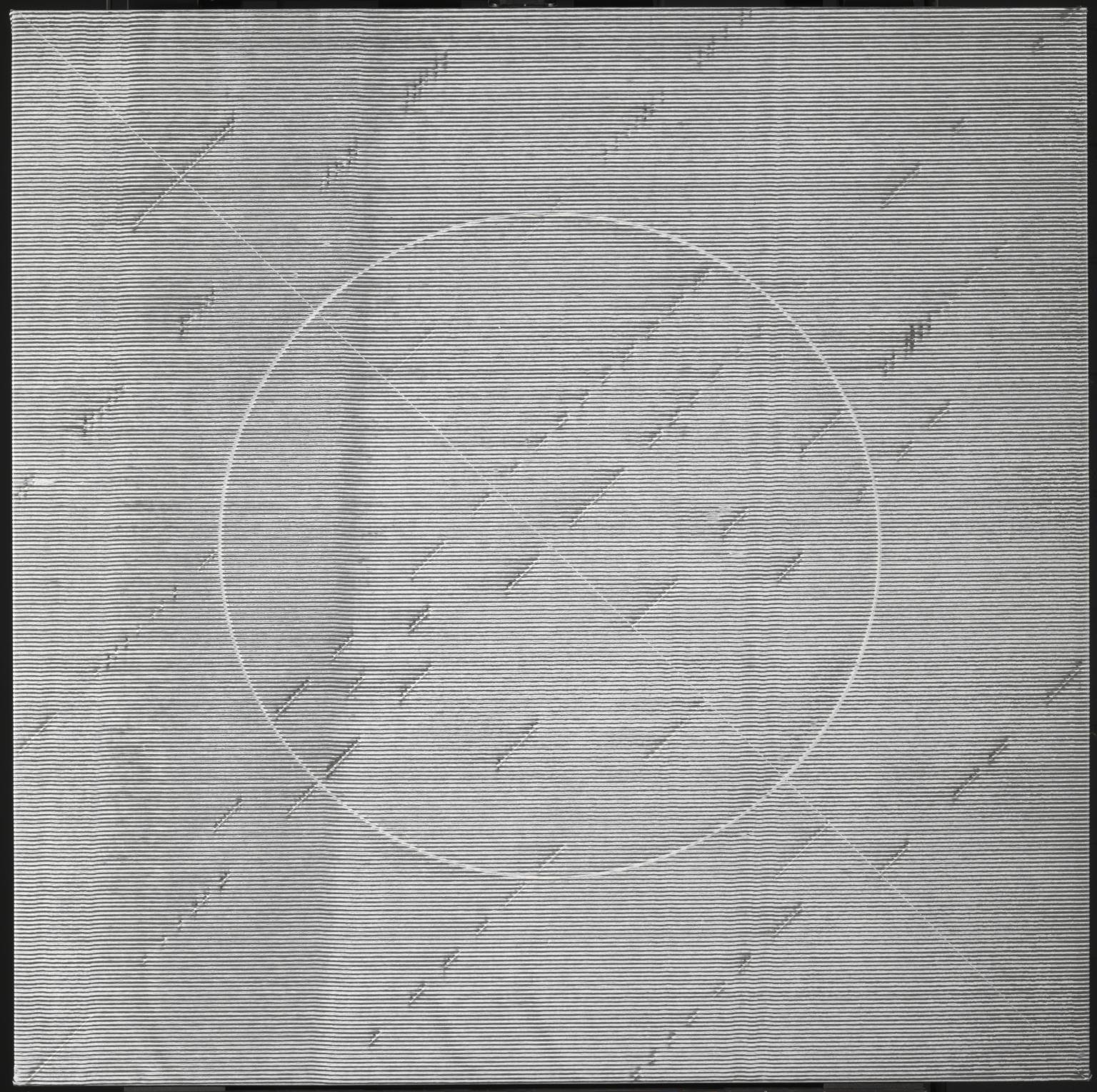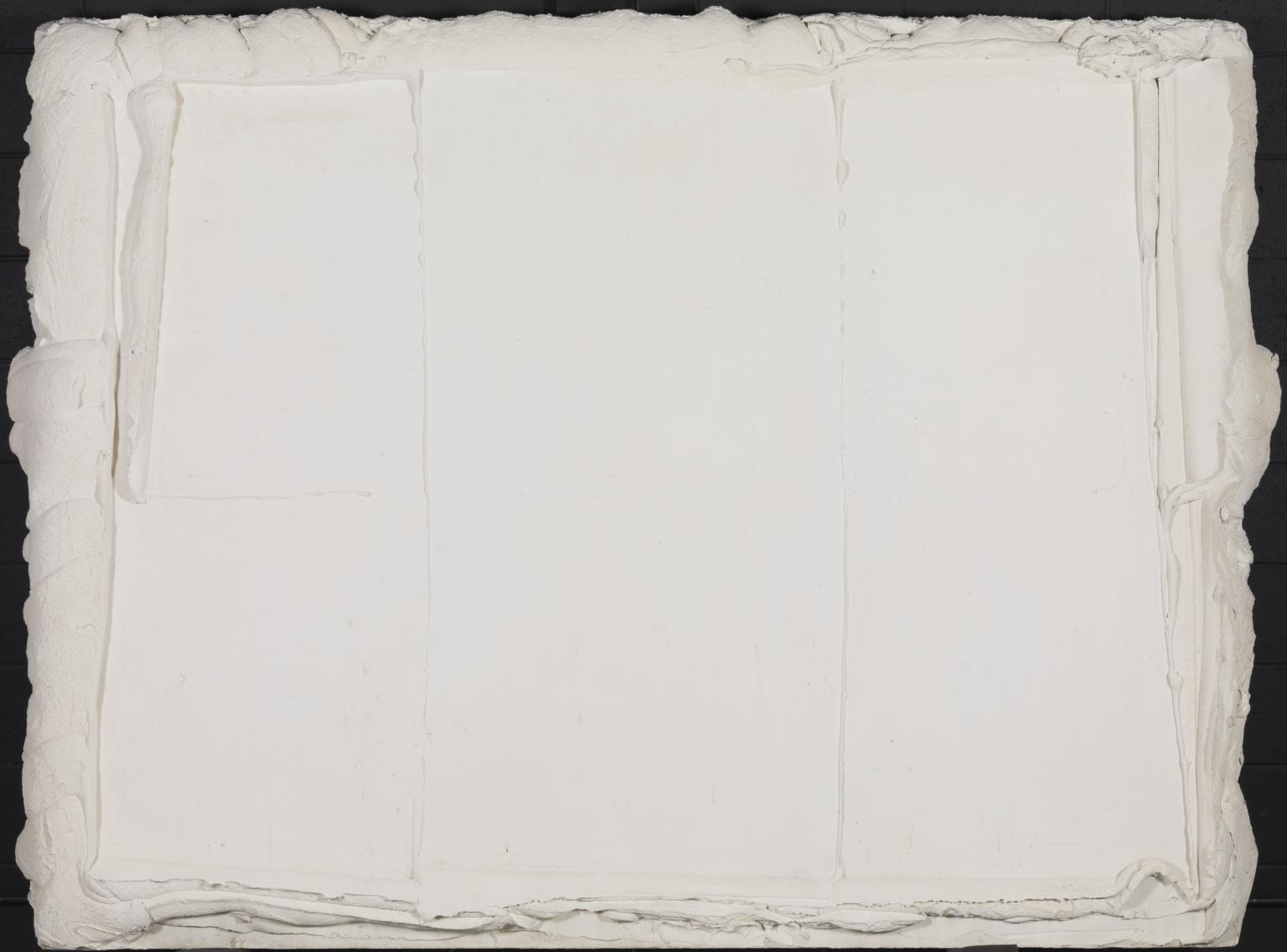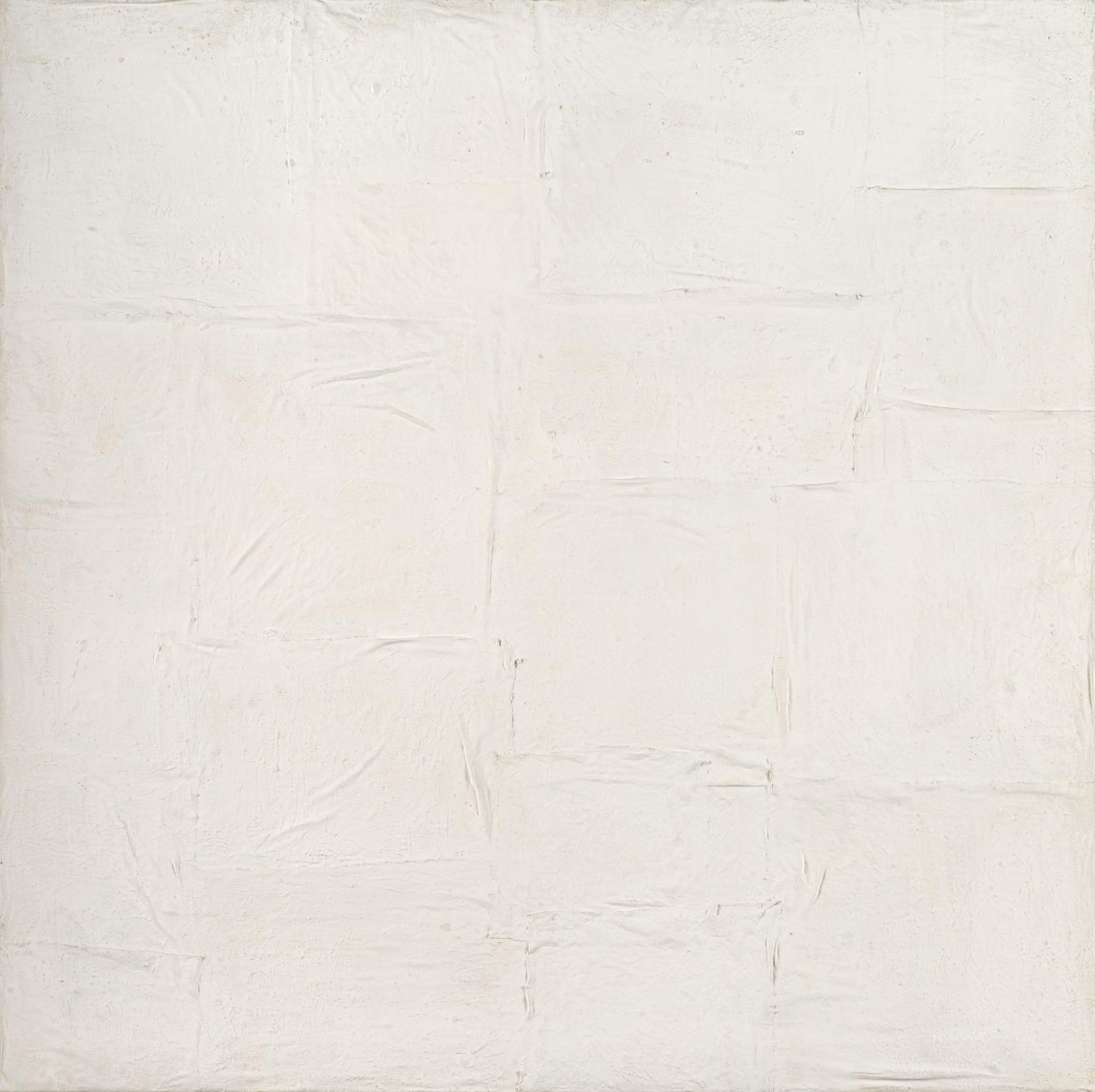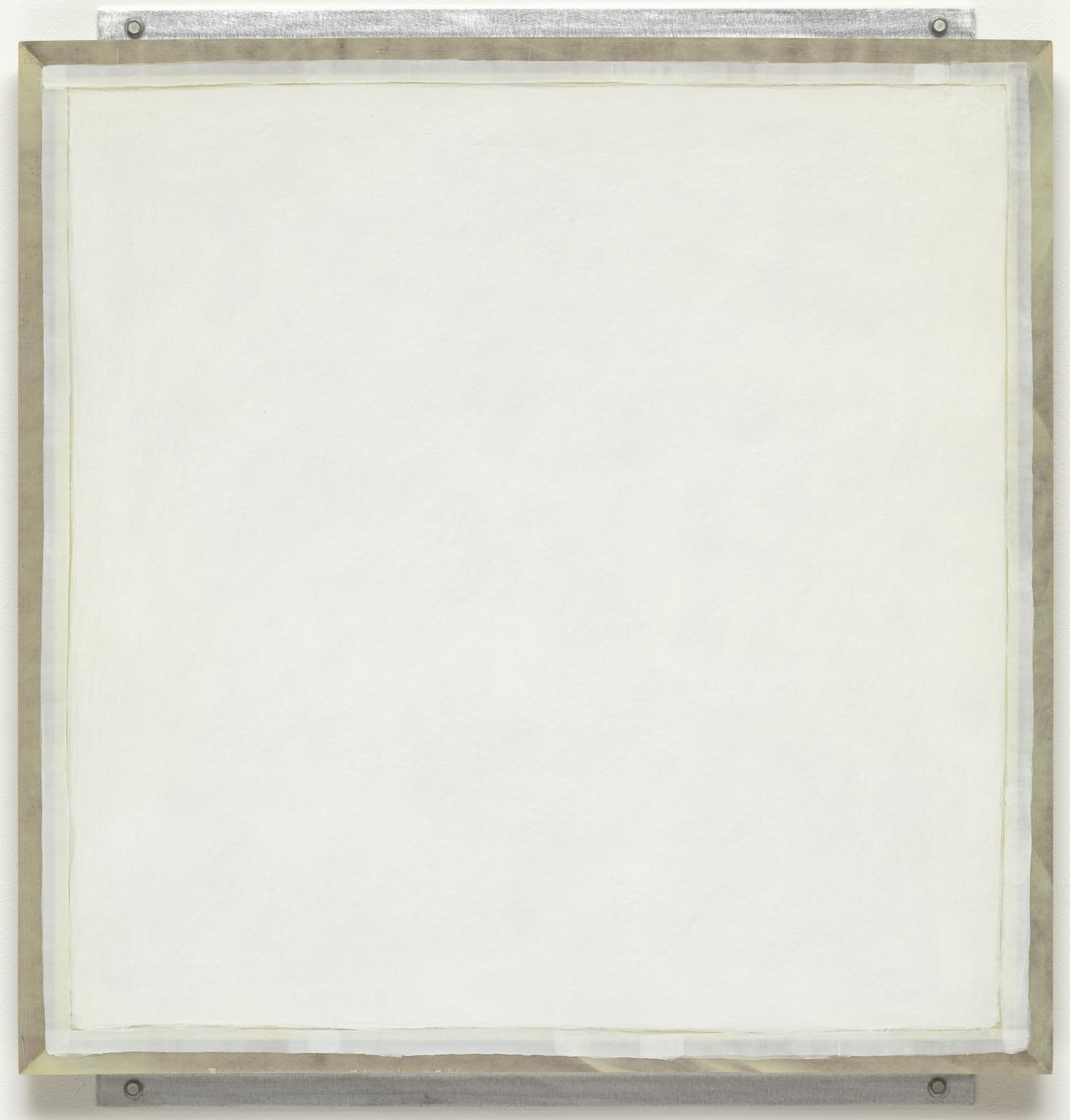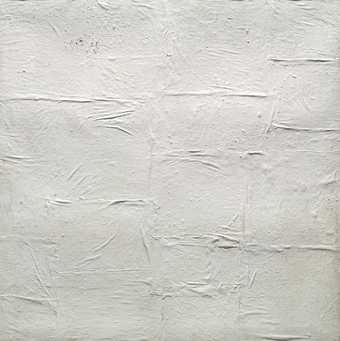12 rooms in In the Studio
Explore the philosophical, poetic and spiritual associations of white monochrome paintings
Artists have made paintings that use only the colour white since the early twentieth century. Single colour paintings, known as monochromes, are an important way for artists to make abstract works. Using only white might seem, at first, to take this approach to extremes. Without image, and apparently pure, the white monochrome appears to resist meaning and interpretation. For some people, it has come to symbolise everything that is believed to be elitist and difficult about modern and contemporary art.
While the paintings and reliefs in this room all use white, or a range of near-white hues, they demonstrate the many ways in which such an apparently reduced range of possibilities can be employed.
Far from limiting artists, the decision to restrict themselves to one colour can open up a rich and versatile area of investigation. It draws attention to a variety of techniques, materials, textures, surfaces, structures and forms, and emphasises the responsiveness of white to light and shadow.
The artists in this room also explore the philosophical, poetic, spiritual or religious associations of white, which in some cultures can suggest contemplation, emptiness, the void or infinite space. Considered in this way, rather than lacking meaning, white becomes loaded with significance.
Curated by Tanya Barson
Art in this room
